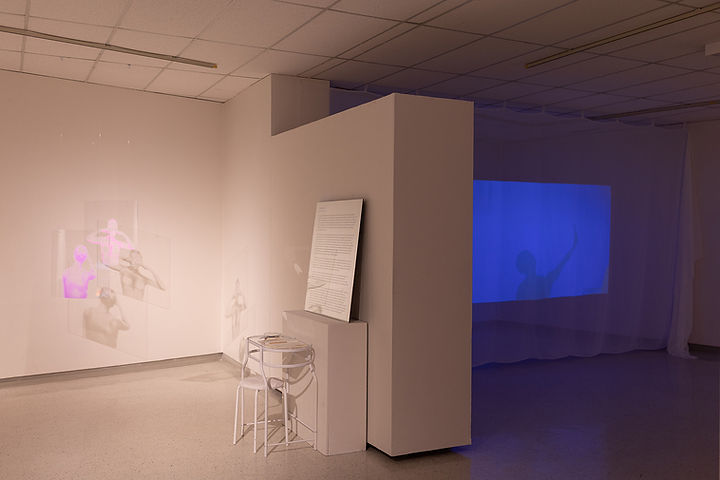
At First Sight
Gordon Snelgrove Gallery, Saskatoon, SK
solo show, March 2022

At First Sight
I have always been interested in different perspectives and ways of looking at things; how every individual interprets, views, and experiences life differently. Since reading John Berger's Ways of Seeing, (particularly his 3rd essay), my curiosity for the gaze, vanity, the surveyor and the surveyed has become central to my work. Berger's text encourages critical thinking about the gaze and to ask questions like: Who is looking? Who is being looked at? How are they being looked at? Who holds the power? In this exhibition, I use representational self-portraits inspired by a post-internet world to engage with the viewer and encourage a critical analysis about looking (Berger, Ways of Seeing, 1972).
At First Sight is a visual display that embodies my experiences as a woman in the modern era. A normalized and routine part of our lives involves looking at each other and ourselves. It is encouraged even more so today by online platforms like social media. In turn, the practice of watching others as well as being a spectacle has become normalized behaviour. As a woman, I am constantly aware of this, and I have experienced it on many occasions. My work stems from my own fascination with social media's impact on the gaze as well as this related passage from Berger: "Men act, and women appear. Men look at women. Women look at themselves being looked at. This determines not only most relations between men and women but also the relation of women to themselves. The surveyor of a woman in herself is male: the surveyed female. Thus, she turns herself into an object - and most particularly an object of a vision: a sight” (Berger, p.47).
In reflecting on this statement, I have developed a series of self-portraits that demonstrate various ways in which a woman may be looked at. These both embody and embrace how women are perceived by men, in art, social media, advertising, or any passerby. Customarily, to view something at first sight is to form an opinion or emotion based purely on visual appearance. Though appearance can be crucial to understanding, it is when one takes a closer look at their subject that they truly begin to understand what is before them. The female form is powerful and beautiful, and I believe it should be admired and celebrated. However, if a woman believes she is only an object of vision, a sight, then how does the act of looking perpetuate objectification? According to Berger, the mirror was used as a symbol of the vanity of a woman in art history, hypocritically shaming her for participating in the same act of looking at herself, and in turn condemning her by calling her vain (Berger, 51).
Frida Kahlo said, "I am my own muse, I am the subject I know best, the subject I want to know better." Like Frida, I describe self-portraiture as a means to depict moments of self-reflection and self-acceptance. While my portraits gaze towards the viewer, at themselves, or at invented impressions of themselves, they also join the spectators and appear aloof, unaware of their audience. In this display, I am setting up an imbalance where continuous looking between the audience and the portraits is recognizably inapt. Each portrait becomes something one doesn't wish to look away from, even though they might feel that they should. With the intention to reflect on the imposed objectification of the female form, I want my work to confront the spectator, critiquing this imbalance by exposing it and embracing it all at once. By displaying these motifs and layers of the gaze in the form of self-portraits, I hope to relay my experiences, frustrations, and acceptance of being a sight.










